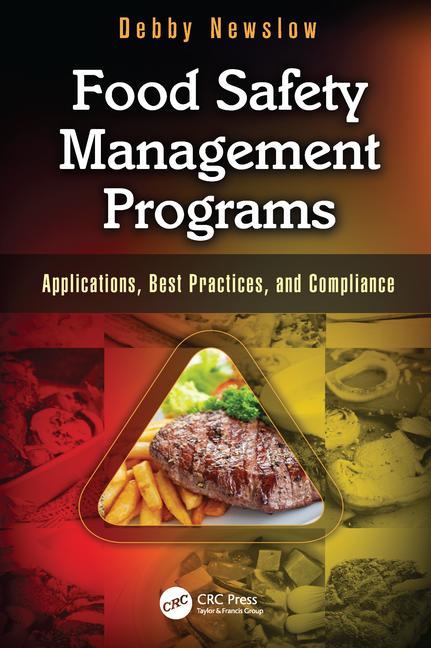FDA Builds Teams to Detect and Prevent Outbreaks

When the U.S. Food and Drug Administration (FDA)’s Coordinated Outbreak Response and Evaluation (CORE) Network began operating in August 2011, it was structured to respond to foodborne illness outbreaks in three interdependent phases: tracking potential outbreaks, stopping an ongoing outbreak and preventing them from happening again.
Although “stopping the outbreak” is of course paramount, the two other phases are equally important. And both CORE’s Signals and Surveillance and Post-Response teams are essential to early warning and prevention—to making progress in the fight against foodborne illness.
Early Warning
We typically don’t think too often about the early warning systems put in place to protect us. Among the most famous is the North American Aerospace Defense Command, or NORAD, which most people hear about only on Christmas Eve as it “tracks” Santa’s progress in delivering gifts for the holiday.
Although it’s not as visible as tracking Christmas presents, CORE’s Signals and Surveillance team (often called just the Signals team) provides early warning of potential outbreaks that may involve FDA-regulated products.
Signals team members comb through information reported to various databases by local and state health agencies and communicate with FDA field offices. The team relies heavily on coordination with the U.S. Centers for Disease Control and Prevention (CDC) and on information obtained from PulseNet, a federal/state molecular subtyping collaboration. PulseNet is a national network of public health and food regulatory agency laboratories that perform standardized molecular subtyping, or “fingerprinting,” of foodborne disease-causing bacteria to identify potential outbreaks.
The team also searches news stories for potential foodborne outbreaks. “You never know when a news article might be a key lead to a larger problem involving an FDA-regulated food,” says Roblyn Gest, a policy analyst on the team. “This has happened in several high-profile outbreaks, including Listeria monocytogenes in cantaloupe in 2011 and Cyclospora in 2013.”
“We also use a discussion forum that links CDC, state epidemiologists and laboratorians, allowing them to review early information about new clusters and get a sense of which ones might be related to an FDA-regulated food,” says Alyssa Clendenin, an epidemiologist on the team. “From there, we can then look further to see if FDA has ever seen the pulsed-field gel electrophoresis (PFGE) pattern of a given cluster before—this can help provide important information for the outbreak investigation.”
In 2013, the Signals team provided early warning for multiple illness outbreaks, most notably evaluating clusters of Vibrio parahaemolyticus illnesses from oysters harvested from the East Coast. A total of 104 cases were identified and linked together.
“I was able to coordinate with FDA field offices, CDC and state officials to track and respond to illnesses from a strain of the bacteria rarely seen on the Atlantic Coast before 2012,” says Dr. Elisa Elliot, a team microbiologist.
During the same period, the Minnesota Department of Health was in the early stages of investigating two cases of listeriosis and asked CDC for additional information on recent cases in other states.
After reviewing reports in PulseNet, CDC identified three additional cases infected with the same strain of L. monocytogenes and reported to the CORE Signals team that there was a signal for soft cheese as a possible cause of the infections.
While CDC and states conducted interviews and analyzed food exposures to help identify a common food among the cases, the Signals team embarked on a search of its own, working with FDA experts in PFGE analysis. The team looked to see if specialists in FDA’s Center for Food Safety and Applied Nutrition (CFSAN) had ever seen indistinguishable or matching PFGE patterns—comparing the DNA “fingerprint” of the outbreak strain with L. monocytogenes isolates collected in previous cases.
“When we got the information on the history of this L. mono strain, we realized that FDA had seen it before in approximately 40 separate isolates, or food samples,” says Jenny Beal, an epidemiologist who worked on the outbreak. “Right away, based on evaluation of basic descriptive data for those samples, we had a suspicion that about two-thirds of them could have come from the environment of a single firm—and we knew that firm was a processor of soft cheese.”
Beal and Chris Wynens, D.V.M., a veterinarian and leader of the Signals team, identified the firm as Crave Brothers Farmstead Classics Cheese of Waterloo, WI. They began to research what the company produced, where it was distributed and the history of FDA inspections at the firm.
“We realized that this firm had a history of colonization by this strain of L. monocytogenes that spanned multiple years, and had been the subject of previous regulatory actions due to significant Good Manufacturing Practice violations,” says Beal. Beal and Wynens also checked the company’s website for clues about its distribution to grocery stores and restaurants.
“We were able to confirm that this firm distributed cheeses through restaurants and other outlets in all the states in which illnesses were reported,” says Wynens.
On June 28, 2013, the Signals team briefed CDC on the results of their investigative efforts, suggesting that CDC and states might specifically look for Crave cheese exposures or reports by cases of eating soft cheeses at restaurants where Crave distributed cheese. Almost immediately, CDC responded that at least one case had confirmed exposure to Crave, and the investigation rapidly focused on cheeses from this supplier as the probable cause of the outbreak.
The following week, the Minnesota Department of Agriculture collected samples of Crave Brothers cheese from retail outlets and found L. monocytogenes in it. The state, CDC and FDA issued warnings to consumers. Soon after, Crave opted to recall several of its cheeses. Further analysis of the cheese collected in Minnesota showed that the strain of L. monocytogenes in the samples was the same as the outbreak strain. At this point, Crave Brothers ceased operations.
Because each state has its own public health agency, it’s historically been difficult to link small numbers of cases in different states. “This is an excellent example of several government agencies integrating their actions to stop an outbreak in its tracks, and our Signals team is at the tip of CORE’s spear,” says Kathleen Gensheimer, M.D., director of CORE. “Of course, we are also looking for ways to extend the tip of the spear.”
Over the last year, the Signals team has done that by reaching out to various industries to learn more about production methods and capabilities, as well as product distribution. This information can help in the early stages of an outbreak investigation.
“When we suspect that a food item is related to an outbreak of illness, the more we know about the who, what, when, where, why and how, the faster we can make a determination,” says Gensheimer. “The food industry has a vested interest in helping us do that. It’s the right thing to do, and if we can find and remove a contaminated product, it ultimately reduces their risk and protects the brand.”
Post-Response and Prevention
The work isn’t over even once an outbreak has been identified and stopped—instead, another CORE team steps into the mix. The CORE Post-Response team focuses on integrating the lessons learned during outbreak responses into the greater matrix of FDA’s foodborne illness prevention efforts.
“Our job is to make sure things do not fall through the cracks,” says Katie Vierk, the Post-Response team leader. “FDA has placed an emphasis on improving our response to outbreaks and using what we’ve learned to prevent new outbreaks. Much of what we do involves coordinating follow-up activities and making recommendations for improvement in current policies and processes.”
In CORE’s first response to an outbreak of norovirus on a cruise ship, the Post-Response team worked with
CFSAN’s Interstate Travel Program (ITP), which protects the traveling public by working to prevent foodborne illnesses on interstate passenger-carrying aircraft, ships, trains and buses, to develop new procedures for working with CORE during these types of outbreaks and communicating to the public.
“We consulted with the program managers, subject matter experts and staff from ORA [Office of Regulatory Affairs] headquarters, field and regional offices who worked on the outbreak to develop comprehensive procedures for dealing with this type of outbreak in the future,” says Caitlin Monahan, the Post-Response team member assigned to the outbreak.
As a result of this effort, in future investigations, CORE will help ITP coordinate the flow of information and evaluate the incoming epidemiological data and reports from the vessel to determine a likely source of the outbreak. CORE will also make information about the outbreak publicly available, using a format similar to that used by the CDC’s Vessel Sanitation Program, which helps the cruise ship industry prevent and control the introduction, transmission and spread of gastrointestinal illnesses on cruise ships.
“In evaluating our processes for improvement, we found that there can never be too much communication between CORE and its partners in the network,” says Vierk. “After an outbreak closed, we would hear that people wondered what the final resolution was.”
To improve that situation, the Post-Response team now develops a final investigation summary for major outbreaks, and this summary is posted on FDA’s website. The summary includes information on the investigation, any regulatory action that has been taken at the time of closure and prevention information for both consumers and industry.
“We work on process improvement, but a major goal for everything we do is prevention of foodborne illness,” says Vierk. “Our work on environmental assessments is a perfect example of that.”
FDA conducts environmental assessments to learn the root causes of outbreaks of foodborne illness or a food contamination event and uses that information to identify ways to prevent them from happening in the future. An environmental assessment is an in-depth, multidisciplinary, systems-based approach to determining how contamination may have happened and spread. In other words, how did the “environment” (the plant where the food was packaged, for example) contribute to the introduction, transmission and proliferation of pathogens or other hazards that caused illness or contamination? The complete system and the interactions of the pieces that make up the system are intensively studied and may involve in-depth assessments of factors such as air and water, soil, ingredients, climate, domestic and wild animal incursions, equipment, company operating procedures and policies, and worker health, hygiene and training.
Since its founding, CORE has coordinated environmental assessments for the 2011 L. monocytogenes in cantaloupe outbreak, the 2012 Salmonella in cantaloupe outbreak and the 2013 cyclosporiasis outbreak. In those three outbreaks, the Post-Response team helped coordinate the logistics of the assessments and also worked to help draft and publish the final assessment report and recommendations. For two of those environmental assessments, the Post-Response team also deployed staff with subject matter expertise to assist.
“The environmental assessment process is an excellent example of prevention at work,” says Kate Kreil, a Post-Response team member involved with implementing CORE environmental assessment activities at FDA. “The environmental assessment provides a window on what factors may have contributed to an outbreak and why those factors occurred, which is vital information for government health and agriculture professionals, as well as members of the food industry, in order to figure out how to prevent the next outbreak.”
For that reason, over the past year, the Post-Response team, with partners across the agency, has been developing an environmental assessment process overview document, leading the steering committee and developing several working groups that will address training and data capturing.
In addition to undertaking these major initiatives, the Post-Response team has used information gained from outbreak responses to make recommendations on future food facility inspection priorities and is coordinating the efforts of an FDA working group focused on improving the effectiveness of agency investigations on farms.
Along with these activities, the six members of the Post-Response team have a wide range of experience that gives them a great deal of flexibility in contributing to the FDA mission. Members of the Post-Response team also regularly teach FDA professional development courses, most notably on produce farm investigations and traceback. Last summer, when CORE needed additional staff members for its response to the cyclosporiasis outbreak, every available member of the Post-Response team answered the call, helping conduct trace-back investigations and other vital functions.
Looking Ahead
CORE’s Signals and Surveillance and Post-Response teams may receive less attention than outbreak response, but they are fundamental to the CORE Network’s long-term efforts.
“These teams are an integrated part of CORE’s everyday operation,” says Kathleen Gensheimer. “But the teams also represent an investment by FDA in the future of foodborne illness prevention, and that investment is already paying off.”
David Steigman is a government communicator with experience in health and homeland security communications for government and the private sector.
Looking for a reprint of this article?
From high-res PDFs to custom plaques, order your copy today!






